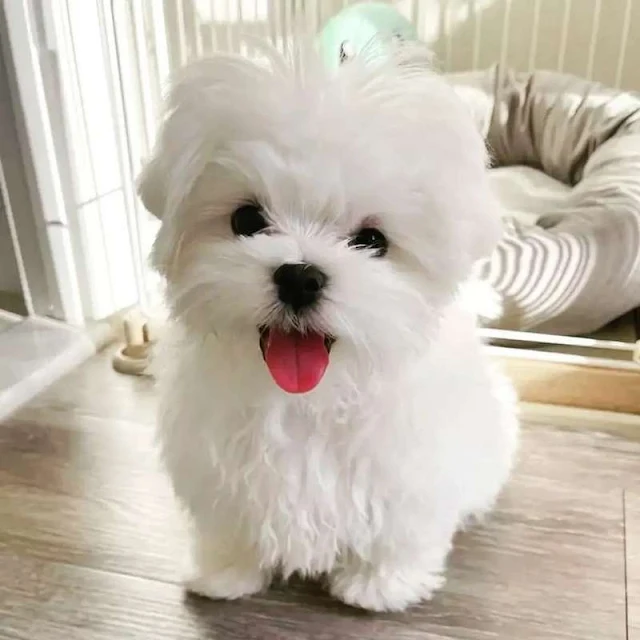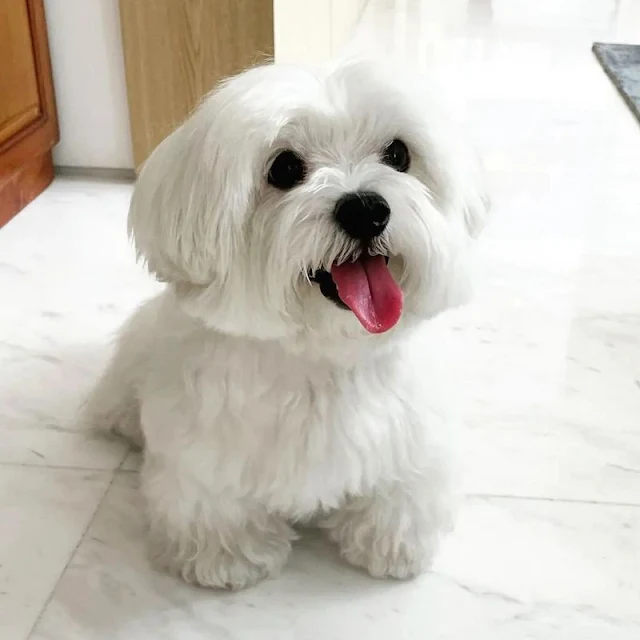The Maltese dog breed, also known as the Maltese bichon, originated in Italy despite its name suggesting otherwise. Highly appreciated by high society over centuries, this breed is one of the most popular today due to its beauty, gentleness, and small size.
Don't be fooled by its puppy-like appearance, though - it is a strong and playful breed that loves to play for hours on end! Read on to learn everything you need to know about the unique qualities of the Maltese dog breed.
History of maltese dog breed
The origin of the Maltese dog breed is somewhat confusing: the theory that it originated in Italy is accepted as official; however, some believe it was brought to Italy by the Phoenicians from Egypt more than 2,000 years ago.
The FCI confirms that the breed does not come from the island of Malta, contrary to its name. The name "Maltese" likely derives from the word "malat", which means port or refuge, and is seen in the names of places such as Meleda, Melita, and Malta. Thus, it is thought that the Maltese breed was once common in port cities, where it would hunt rats and mice.
Did you know that Maltese dogs were already popular in ancient Rome? It is even said that the first person to write about these dogs was the brilliant philosopher, Aristotle. He owned one of these special dogs, which he referred to as Melitaei Catelli.
Starting in the 17th century, the Maltese breed gained popularity as breeders began to cross and mix the dogs to make them smaller. This resulted in many different colored Maltese dogs. It wasn't until the 20th century that the pure white Maltese breed was officially approved.
In 1954, the Fédération Cynologique Internationale officially recognized the Maltese dog breed, with Italy being the primary nation responsible for its development and breeding.
Did you know that Maltese dogs were already popular in ancient Rome? It is even said that the first person to write about these dogs was the brilliant philosopher, Aristotle. He owned one of these special dogs, which he referred to as Melitaei Catelli.
Starting in the 17th century, the Maltese breed gained popularity as breeders began to cross and mix the dogs to make them smaller. This resulted in many different colored Maltese dogs. It wasn't until the 20th century that the pure white Maltese breed was officially approved.
In 1954, the Fédération Cynologique Internationale officially recognized the Maltese dog breed, with Italy being the primary nation responsible for its development and breeding.
Maltese dog breed characteristics
The Maltese breed of dog is a small breed, with an adult weight of between 7 and 9 pounds, and a maximum height at the withers of 10 inches.
The head of this dog is round, and its eyes and nose are black. It has low ears that are covered with hair, which helps them blend in with the rest of the head, especially when the dog has long fur.
The long, straight, silky white coat is the most noticeable characteristic of the Maltese dog breed. It is abundant, but has no undercoat, as is the case with other breeds - if left to grow, it can reach all the way to the ground! But really, this is only usually done with show dogs. Pet Maltese (which is the life they really like), usually have somewhat shorter hair, for everyone's convenience. Also, despite having long hair, it doesn't shed! If you're looking for a pet but wouldn't want to see your house full of hair, the Maltese is a good option to consider. Check out this article about small dogs that don't shed.
Although he is small, he is sturdy and strong! His legs are short (he is a very short dog), but the Maltese is agile and sturdy. He loves to run and play! His tail is long and pointed, all covered with hair.
Maltese dog breed character
If you want a Maltese breed dog, get ready to play! It is very cheerful and active, as well as affectionate and very faithful. He is also very intelligent and quite obedient, so you can teach him everything you want: rules of conduct, games, tricks, etc. The Maltese is, in every way, a very funny and curious dog. He loves to walk around, sniffing every corner, sniffing everything he finds.
His character is excellent; he is affectionate, loyal, sweet... He can adapt to living with any kind of person and in any place. In addition, he is a good choice for those who are looking for their first pet and also for families with children, as he loves to be cuddled! He also gets along well with other dogs and pets.
Treating him as a lap dog would be a mistake... A Maltese can become somewhat capricious if they are used to eating leftovers or if they are allowed to develop the so-called "small dog syndrome," that is, allowing the dog to take control over the owner. If this happens, it makes their education very difficult.
Maltese breed dogs are always very alert and often bark at stimuli such as street noises or the doorbell. It is fine if they only do it as a warning, but be careful. If it becomes a habit, it can be annoying. In addition, they can be somewhat jealous when people from outside the family enter the house.
Read also: Can Maltese be left home alone?
The Maltese dog breed is considered one of the most intelligent, but this does not mean that training should be neglected. The Maltese, just like any other dog, needs education to become a perfect pet.
The Maltese dog breed is considered one of the most intelligent, but this does not mean that training should be neglected. The Maltese, just like any other dog, needs education to become a perfect pet.
Health of the Maltese dog breed
Maltese dogs are generally quite healthy. In fact, it is a very long-lived breed. These dogs even exceed 15 years of age on many occasions. But like all dogs, there are certain diseases and problems that can affect them:
- Their skin is delicate, so even if it is covered with hair, you have to be careful about sunburn. The exposed areas are above all, the hairline and the belly, in case he lies down.
- Eye problems are frequent, as well as irritations due to hair contact. As they are quite protruding, they can also be hit or rubbed and get ulcers. Learn how to remove eye stains from your dog's eyes.
- Some Maltese tend to lick themselves. When done excessively, this can lead to irritation or even localized hair loss. Why do dogs lick their paws?
- Limb problems, such as patellar luxation, are common in Maltese breed dogs and, in general, in all small dogs.
- Bladder stones are more common in small dogs than in large dogs, so they can also affect the Maltese, although this is not the most common.
- It is important to take good care of your dog's teeth, as some Maltese tend to lose them.
- Ear infections, in which they usually secrete a dark and foul-smelling liquid.
How to care for a Maltese dog
The Maltese dog breed requires some special care to grow up healthy and happy. It will need at least a couple of daily walks to relieve itself and exercise. It is not necessary that the exercise be very intense, but neither should we make our Maltese a sedentary dog.
The coat needs regular combing to keep it healthy and free of knots. The Maltese's eyes should also be cleaned, preferably on a daily basis, as they tend to secrete quite a lot of doggy eye-mites. The ears should be cleaned frequently and any hairs growing inside the ear should be plucked out.
We promise that if you give your Maltese dog everything he needs to be happy, he will give it back to you in spades. Besides, as it does not shed hair, it is perfect for allergy sufferers. If you decide to share your life with a Maltese dog, you won't regret it!
How much is Maltese dog?
In the United States, the price for a Maltese dog can vary depending on factors such as the breeder, location, and pedigree. On average, however, you can expect to pay between $1,000 to $4,000 for a Maltese puppy from a reputable breeder.



